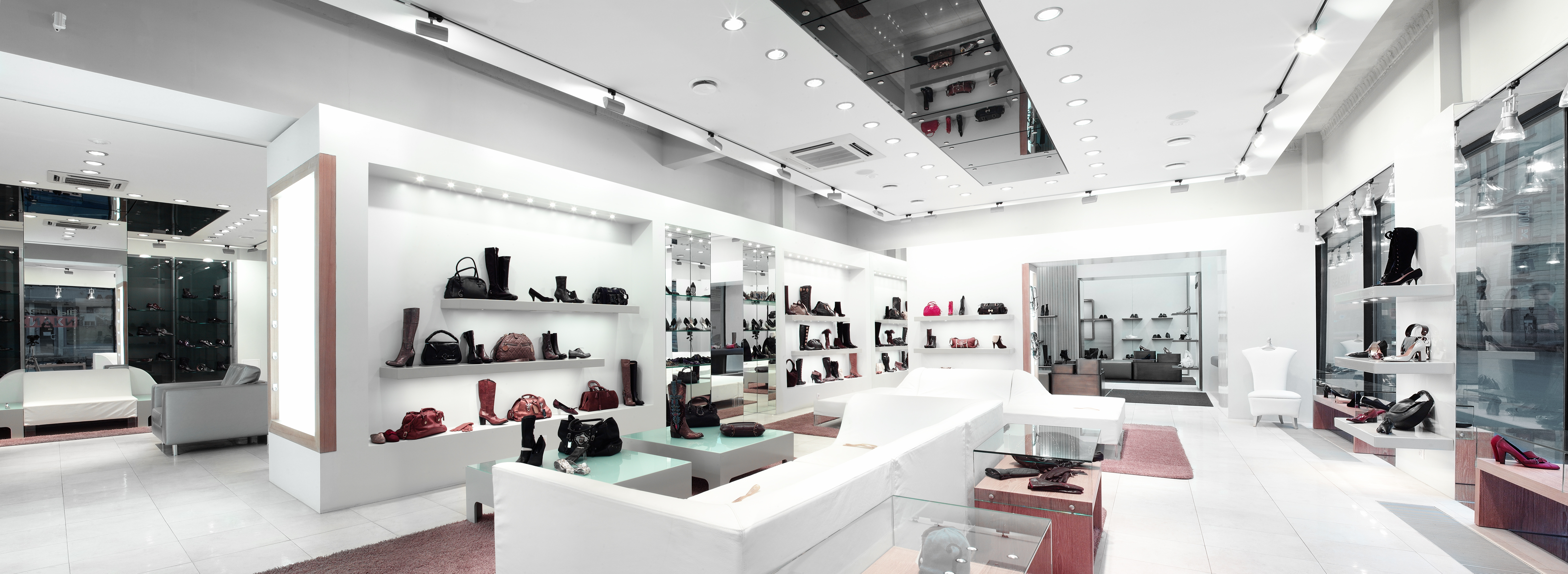Shopfitting is a crucial process in the retail industry that involves designing, furnishing, and equipping a retail space to create an attractive and functional environment for customers. As a business owner or manager, understanding the costs involved in shopfitting is essential for effective budgeting and decision-making. In this article, we will explore the factors that influence shopfitting costs, average costs for different types of businesses, how to determine your shopfitting budget, hidden costs to consider, ways to save money without compromising quality, the importance of hiring a shopfitting professional, and real-life case studies to provide you with a comprehensive understanding of shopfitting costs.

Understanding Shopfitting
Before delving into the costs, it is important to have a clear understanding of what shopfitting entails. Shopfitting is not just about creating an aesthetically pleasing store; it is about optimizing the space to enhance the customer experience and increase sales. It involves various elements such as layout design, fixtures, lighting, flooring, signage, displays, and technology integration. Each element contributes to creating a cohesive and engaging retail environment that reflects your brand identity and attracts your target audience.
Factors That Influence Shopfitting Costs
Several factors can influence the cost of a shopfitting project. The size of the retail space is one of the primary factors, as larger spaces require more materials and labor. The complexity of the design and the level of customization also impact costs. For example, if you require intricate custom-made fixtures and displays, it will be more expensive compared to off-the-shelf options. The quality of materials used, such as the type of flooring or lighting fixtures, can significantly affect the overall cost. Additionally, location plays a role, as labor and material costs can vary depending on the region and accessibility of the site.

The type of business you operate is another crucial factor. Different industries have distinct requirements, and therefore, the cost of shopfitting can vary. For instance, a high-end fashion boutique may require premium materials and sophisticated lighting, while a fast-food restaurant may prioritize efficient kitchen equipment and durable seating. Understanding your specific industry needs will help you estimate the costs more accurately.
Average Shopfitting Costs
It is important to note that shopfitting costs can vary significantly depending on the size, complexity, and location of the project. However, we can provide you with some average cost ranges based on different types of businesses to give you a general idea.
Determining Your Shopfitting Budget
Once you have a general understanding of average costs, it is important to determine your shopfitting budget. Start by assessing your overall financial situation and the funds you have available for the project. Consider your business goals and the value you place on creating an exceptional customer experience. Remember that shopfitting is an investment in the long-term success of your business, so it is crucial to allocate a realistic budget.
Consulting with a shopfitting professional can help you determine the feasibility of your budget and provide guidance on cost-saving strategies. Consider allocating a contingency fund for unexpected expenses that may arise during the project. It is better to be prepared for unforeseen costs rather than being caught off guard.
Shopfitting Cost Breakdown
To better understand the cost breakdown of a shopfitting project, let’s take a closer look at the various elements involved:
- Design and Planning: This includes the fees for hiring an architect or interior designer to create a functional and visually appealing layout for your retail space. It may also involve obtaining necessary permits and approvals from local authorities.
- Fixtures and Displays: The cost of fixtures and displays, such as shelving units, racks, mannequins, and product displays, can vary depending on the materials and customization required.
- Flooring: Flooring options range from basic vinyl or carpeting to high-end hardwood or polished concrete. The cost will depend on the square footage of the area, the type of flooring material, and any additional labor required for installation.
- Lighting: Lighting plays a crucial role in creating the right ambiance and highlighting products. The cost includes the purchase and installation of lighting fixtures, as well as any electrical work required.
- Signage: From exterior signage to interior wayfinding signs, the cost of signage depends on the size, materials, and complexity of the design.
- Technology Integration: If you require technology integration such as point-of-sale systems, security cameras, or audiovisual equipment, these costs should be factored into your budget.
- Labor and Installation: The cost of labor for shopfitting projects can vary depending on the complexity of the design, the number of trades involved (carpenters, electricians, plumbers, etc.), and the location.
By understanding the cost breakdown, you can prioritize your expenses and make informed decisions during the shopfitting process.

Hidden Costs to Consider During Shopfitting
While estimating the costs of shopfitting, it is important to consider potential hidden costs that may arise during the project. These can include:
- Site Preparation: If your retail space requires extensive preparation, such as demolition, asbestos removal, or structural modifications, these costs can add up.
- Unforeseen Structural Issues: Once the project is underway, unexpected structural issues may be uncovered, requiring additional work and expenses.
- Permits and Approvals: Depending on your location and the scope of your project, you may need to obtain permits and approvals from local authorities. These can incur fees and potential delays.
- Utilities and Services: Installing or modifying utilities such as plumbing, electrical, and HVAC systems may require the involvement of specialized trades and incur additional costs.
- Project Management: If you choose to take a hands-on approach to project management, consider the time and effort required, as well as the potential for unforeseen challenges. Hiring a project manager can help streamline the process but comes with additional costs.
Being aware of these hidden costs will help you avoid any financial surprises and ensure a smoother shopfitting experience.
Ways to Save Money on Shopfitting Without Compromising Quality
While shopfitting can be a significant investment, there are ways to save money without compromising the quality of your project. Consider the following strategies:
- Prioritize Essential Elements: Focus on the key elements that will have the most impact on your customer experience, such as lighting, flooring, and fixtures. Allocate your budget accordingly to ensure these areas are of high quality.
- Consider Pre-owned or Repurposed Fixtures: Instead of investing in brand-new fixtures and displays, explore options for pre-owned or repurposed items. This can significantly reduce costs while still maintaining a unique and stylish look.
- Utilize Off-the-shelf Products: Off-the-shelf products are often more cost-effective than custom-made items. Explore ready-made fixtures and displays that align with your design vision to save both time and money.
- Get Multiple Quotes: It is always wise to obtain multiple quotes from different shopfitting professionals. This allows you to compare prices, services, and expertise to find the best fit for your project.
- Timing: Consider the timing of your shopfitting project. Off-peak seasons or slower business periods may provide opportunities for cost savings, as contractors may offer discounts or reduced rates.
By implementing these cost-saving strategies, you can achieve a high-quality shopfitting project within your budget.
Hiring a Shopfitting Professional
While it may be tempting to tackle shopfitting as a do-it-yourself project, hiring a professional is highly recommended. A shopfitting professional brings expertise, experience, and industry knowledge to the table, ensuring that your project is executed efficiently and to the highest standards.
When choosing a shopfitting professional, consider the following:
- Portfolio and Experience: Review their portfolio to assess their previous work and expertise in your specific industry. Look for examples that align with your design vision and requirements.
- Reputation and Reviews: Research the shopfitting professional’s reputation by reading reviews and testimonials from previous clients. This will give you insight into their reliability, professionalism, and overall quality of work.
- Clear Communication: Effective communication is vital throughout the shopfitting process. Ensure that the professional you choose is responsive, transparent, and able to clearly articulate their ideas and recommendations.
- Budget Management: A reputable shopfitting professional will have experience in managing budgets effectively. Discuss your budget expectations upfront to ensure that they can work within your financial limitations.
By hiring a shopfitting professional, you can save time, avoid costly mistakes, and achieve a successful shopfitting project that aligns with your business goals.

Finding the Right Balance Between Cost and Quality in Shopfitting
Shopfitting is a vital investment for businesses in the retail industry. Understanding the factors that influence shopfitting costs, determining your budget, and considering hidden expenses are crucial for effective planning and decision-making. By prioritizing essential elements, exploring cost-saving strategies, and hiring a shopfitting professional, you can achieve a high-quality shopfitting project that aligns with your budget and enhances your customer experience.
Remember, shopfitting is not just about the initial cost; it is an investment that can lead to increased sales, improved brand perception, and long-term success. By finding the right balance between cost and quality, you can create a retail space that resonates with your target audience and sets your business apart in a competitive market.
